I created a new recession indicator based on claims. Hurricanes have nothing to do with this.
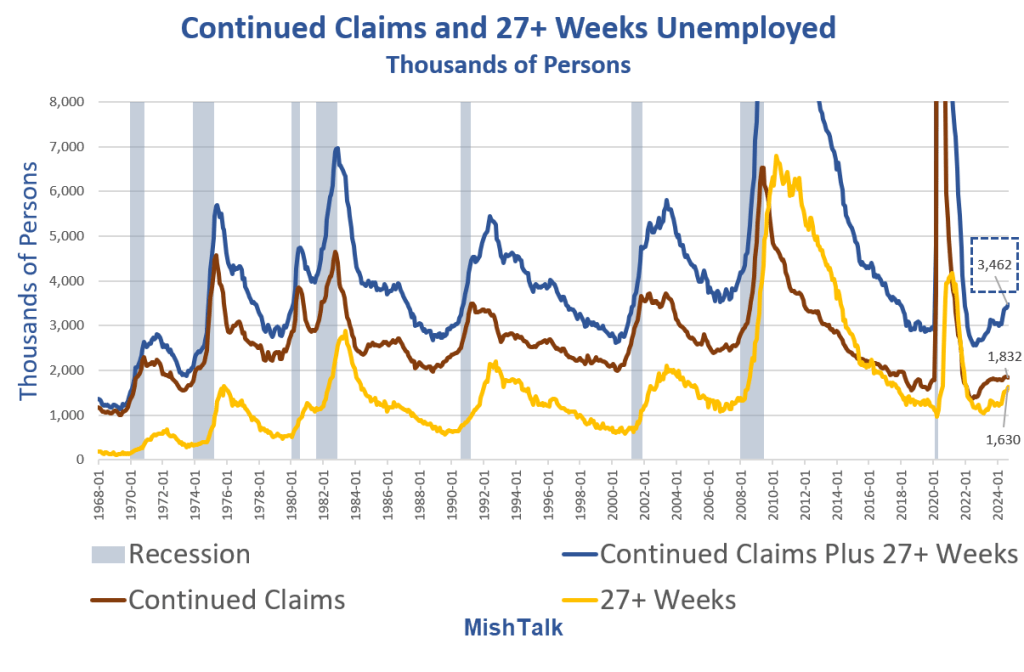
There has been a lot of ink, most of it misleading, regarding a huge spike in hurricane-related initial unemployment claims.
I discussed charts of the data in my previous post, Initial and Continued Unemployment Claims Surge, a Cause for Alarm?
Understanding the Lead Chart
- The problem with continued claims is that benefits in 48 of 50 states expire after 26 week. Once a person hits 27 week, they are still unemployed but they have no claim.
- To address this issue, I add those unemployed 27 weeks or more to continued claims.
- Since claims are weekly, I compute a monthly average (not a 4-week moving average) of continued claims and add that to the monthly total of those unemployed 27 weeks or more.
The slope of the total rise (blue) is stunning vs the continued claims rise (red).
Unemployment Level 15+ Weeks and 27+ Weeks
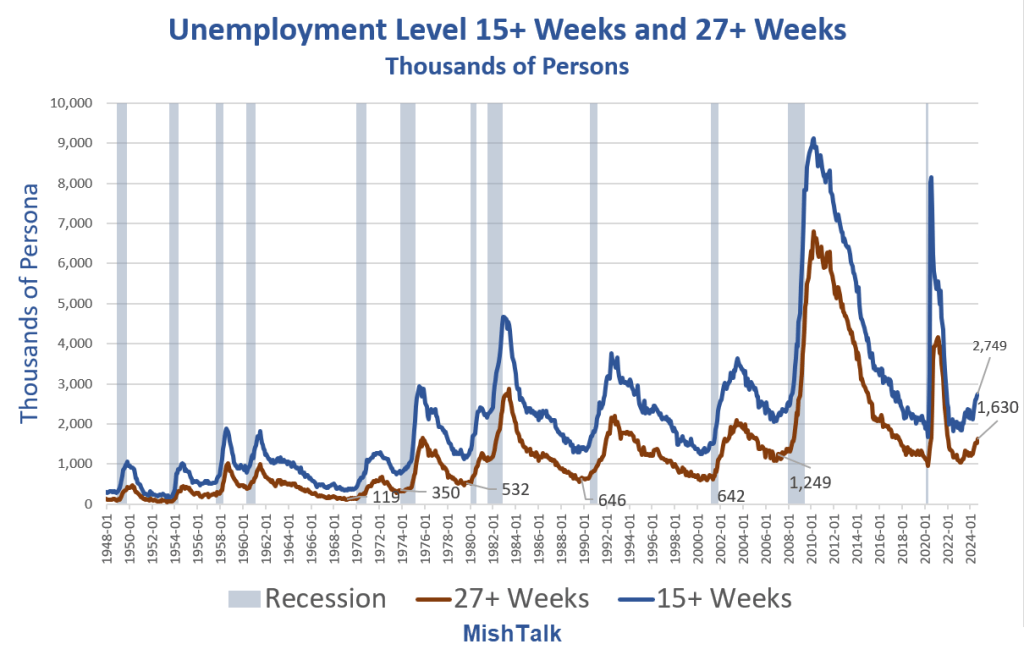
If that does not look concerning, then you don’t know how to read a chart.
History suggests that once a person hits 15+ weeks they do more than the distance to no unemployment insurance.
Continued Claims and 27+ Weeks Detail
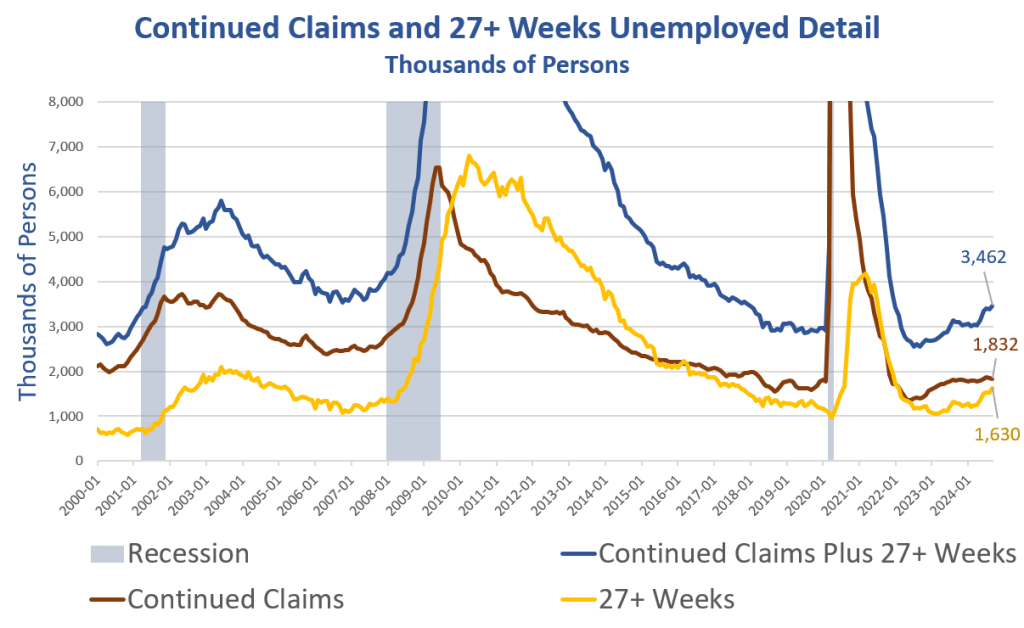
U1 Unemployment 15+ Weeks
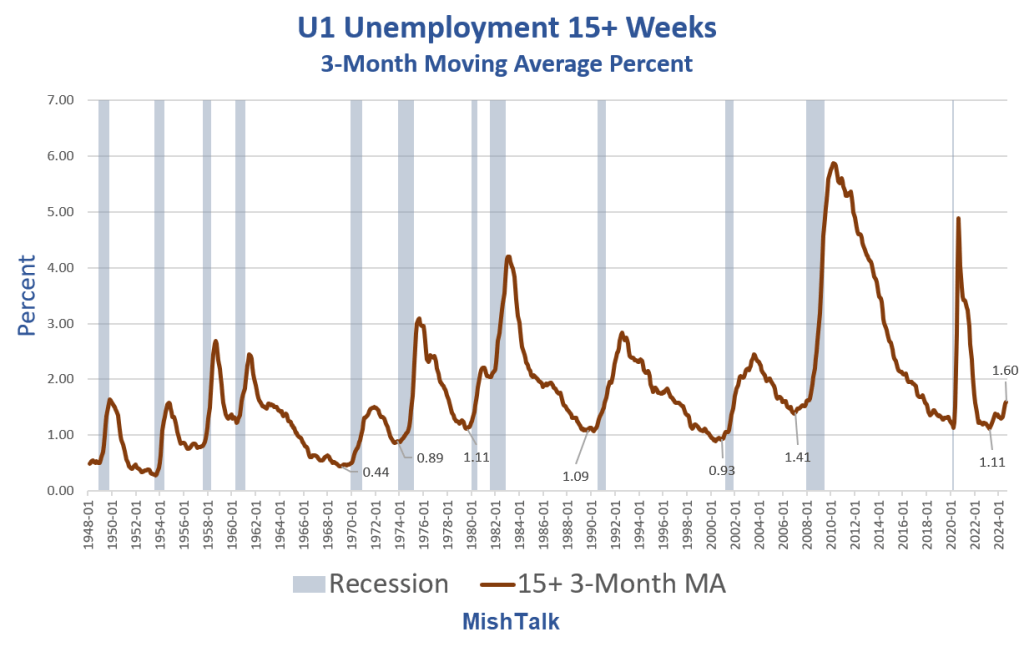
The BLS defines the U-1 Unemployment rates as the percentage of people unemployed 15 weeks or longer.
The recent spike is obvious. And at 15 weeks no one can blame this on hurricanes.
McKelvey Type Recession Indicator
From these 3-month moving averages, we can create a McKelvey style recession indicator comparing a rise in the three-month moving average of 15+ weeks to a prior minimum.
For discussion of the McKelvey Recession indicator, please see Mcelvey-PMES Recession Indicator Weakens Slightly but Signal Still Firm
McKelvey looks back 12 months but 15+ and 27+ indicators are so lagging (especially the latter) that we don’t want to look back too far.
I use a lookback period of 5 months because it seems to provide the best signal.
U1 Unemployment 15+ Weeks McKelvey Style
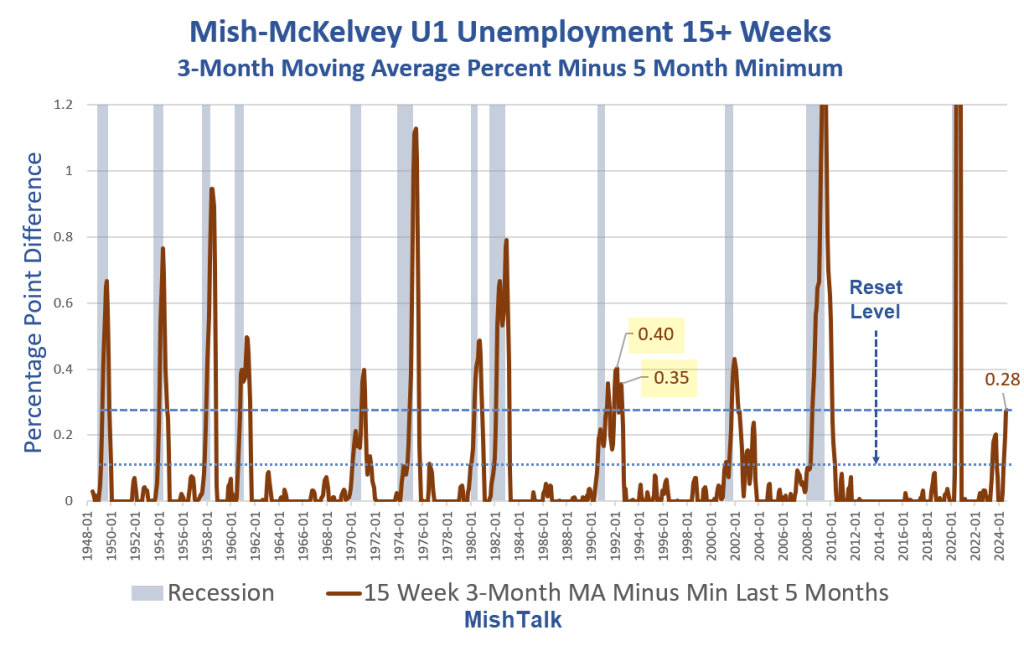
The Mish-McKlevey recession signal has no false negatives since 1948. It has either zero of two false positives depending on the level needed to reset the indicator.
The current value of 0.28 is very elevated and strongly suggests the US is in recession right now.
It is this upturn, not the level of claims that indicates recession.